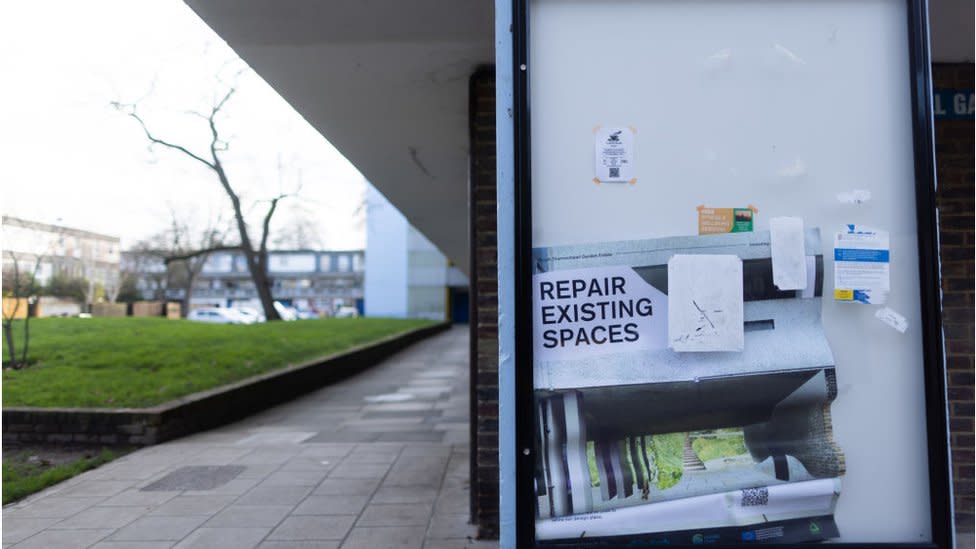Service charges: Who, what, where, when, why?

Huge rises in service charge fees for leasehold and shared ownership properties are leaving some tenants unable to pay.
BBC London has heard from people whose monthly bills have soared, who find themselves struggling to meet the cost and unable to sell a home with such high fees attached to it.
Some residents have decided to strike and simply not pay, while others have said they feel trapped or that their lives have been ruined.
BBC London looks at what service charges are used for, how they are calculated and what leaseholders can do if they want to challenge a landlord.
What are service charges?
Service charges are payable by the leaseholder to the landlord for services the landlord is obliged to provide under the terms of the lease.
The amount varies from year to year depending on the costs the landlord incurs.
Legislation controlling the level of charges only applies to variable amounts of service charges as defined by the Landlord and Tenant Act 1985 and not to fixed amounts.

A landlord cannot recover service charge costs that were incurred more than 18 months before they demanded them.
Services can include maintenance, repair, and sometimes improvement of roofs, foundations, window frames, guttering, communal drains and pipes and insurance of the building.
Full details should be on the lease documents, which will also state when the service charge is due.

It is often payable yearly or twice yearly, either at the beginning of the calendar year (January) or the financial year (April), or sometimes on quarter days.
Quarter days were the four dates in each year, roughly three months apart, on which servants were hired, school terms started, and rents were due.
Most modern leases allow for the service charge to be payable in advance of the landlord incurring the costs, based on an estimate of costs in the coming year.
Some older leases allow recovery in arrears (meaning the landlord has to incur the cost first and then claim it from leaseholders).

How much?
The service charge is based on what a landlord thinks they are going to spend in the coming year.
At the end of that year, the landlord should provide a statement of the actual costs. If they exceed the estimate, they can get the shortfall from a leaseholder using something called a "balancing charge".
If the landlord has spent less than estimated, a credit for the overpayment should be carried forward as a credit to the leaseholder's next yearly payment.
Where the works are improvements rather than repairs, the landlord has a heightened duty to consider the financial impact on the individual leaseholder and to give full consideration to alternative, cheaper options.
More information about service charges can be found here:

What is a sinking fund?
Some leases allow the landlord to demand a contribution towards a "sinking fund" using the service charge.
The purpose is to build up a fund to pay for future larger scale works, such as repainting the whole building or replacing window frames.
It is essentially a sort of enforced savings scheme with the deposits earmarked to pay for the work when it becomes necessary.
The benefit for leaseholders is that a sinking fund means they will not face a large one-off bill when the work is done.
However, unless they agree otherwise with whoever they sell to, leaseholders will not get any of their sinking fund contributions back if they move.

What if the charge is unreasonable?
Service charges can go up or down without any limit, but a landlord can only implement the charge if the costs have been reasonably incurred and the work is of a reasonable standard.
A leaseholder can challenge the "reasonableness" by applying to a tribunal, which has the power to make a ruling whether, or how much of, a service charge is reasonable or payable.
In England, this is the first-tier tribunal (property chamber).
In Wales it is the leasehold valuation tribunal.

Administrative details
A service charge demand must contain:
The landlord's name and address (an agent's name and address is not sufficient)
A summary of leaseholders' rights and obligations (including details of a leaseholder's right to apply to a tribunal)
If the demand does not comply with either of these requirements, the leaseholder has a legal right not to pay unless and until the service charge is demanded in the proper manner.

How much is too much?
If a landlord proposes to carry out works that will cost any one leaseholder more than £250, they are required to go through a consultation.
This means providing leaseholders with notices allowing them to make observations on the proposals and sometimes to nominate a contractor from whom the landlord is to try to obtain an estimate.
The landlord is also required to notify leaseholders of the estimates.
The major works charge is still a service charge and has to comply with the requirement of reasonableness.

How to challenge service charges
If the charges are very high, or work was not done or was done badly, or you cannot find out how your service charges are being spent, or you are charged for services or works not in your lease, you can challenge the charges.
You have the right, within six months of receiving a written summary of costs, to require the landlord to provide you with reasonable facilities to inspect the accounts, receipts and other documents.
It is a criminal offence for the landlord to refuse to supply this information.
Your lease may give your landlord a right of re-entry or forfeiture where you have failed to pay charges which are properly due.
However, the landlord must meet all the legal requirements and obtain a court order, which will only be granted if you have admitted you are liable to pay the amount or it is finally determined by a court.
Listen to the best of BBC Radio London on Sounds and follow BBC London on Facebook, X and Instagram. Send your story ideas to hello.bbclondon@bbc.co.uk
